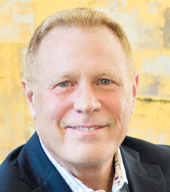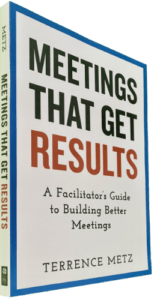The primary responsibility of a facilitator is to protect the participants. Furthermore, the facilitator helps drive the group toward its desired deliverable. Since the deliverable is built to serve the participants, people should take priority over the issues. To some extent, both people and issues are managed by creating an environment that is conducive to productivity. Easier said, than done, to ensure meeting inclusiveness.
The International Association of Facilitators (IAF) aspires for you to:
Value of Meeting Inclusiveness
Dr. Edward de Bono provides expert insight into parallel thinking; i.e., there can be more than one correct answer. Listening to others, their perspectives, and rationale creates more robust products. Because of selective perception, the aggregation of all points of view provides stronger insight than any single point of view. When facilitating a group of nine people, for example, look for the tenth answer. Our technique refers to this concept as N+1, where N equals the number of participants, always seeking the +1 perspective, thus encouraging meeting inclusiveness.
Use of Meeting Ground Rules
Remember to embrace and enforce meeting and workshop Ground Rules to create a climate of safety and trust. See our discussion on Ground Rules for additional comments and suggestions.
Key to Innovation
Diversity, or plurality as we prefer to call it (suggesting the beauty of a mosaic rather than the fracturing of something), is undoubtedly the key to innovation. See de Bono’s Six Thinking Hats (modified to Seven Thinking Hats with the MGRUSH FAST technique to also include the “Process” or royal purple view) or other means of facilitating perspective found in your MGRUSH manual or other expert sources such as Roger von Oech’s Creative Whack Pack. Consider special Icebreakers, break-out sessions, or team-building exercises that emphasize the value of plurality because meeting inclusiveness follows integrative exercises. As a result, Scannell and Newstrom offer hundreds of options among other expert tools. Take this opportunity to leverage the tactile sense, and consider some of the professional Legos® activities or others designed to prove the value of plurality and its positive impact on the quality of deliverables.
______
Don’t ruin your career by hosting bad meetings. Sign up for a workshop or send this to someone who should. MGRUSH workshops focus on meeting design and practice. Each person practices tools, methods, and activities daily during the week. Therefore, while some call this immersion, we call it the road to building high-value facilitation skills.
Our workshops also provide a superb way to earn up to 40 SEUs from the Scrum Alliance, 40 CDUs from IIBA, 40 Continuous Learning Points (CLPs) based on Federal Acquisition Certification Continuous Professional Learning Requirements using Training and Education activities, 40 Professional Development Units (PDUs) from SAVE International, as well as 4.0 CEUs for other professions. (See workshop and Reference Manual descriptions for details.)
Want a free 10-minute break timer? Sign up for our once-monthly newsletter HERE and receive a free timer along with four other of our favorite facilitation tools.

Terrence Metz, president of MG RUSH Facilitation Training, was just 22-years-old and working as a Sales Engineer at Honeywell when he recognized a widespread problem—most meetings were ineffective and poorly led, wasting both time and company resources. However, he also observed meetings that worked. What set them apart? A well-prepared leader who structured the session to ensure participants contributed meaningfully and achieved clear outcomes.
Throughout his career, Metz, who earned an MBA from Kellogg (Northwestern University) experienced and also trained in various facilitation techniques. In 2004, he purchased MG RUSH where he shifted his focus toward improving established meeting designs and building a curriculum that would teach others how to lead, facilitate, and structure meetings that drive results. His expertise in training world-class facilitators led to the 2020 publication of Meetings That Get Results: A Guide to Building Better Meetings, a comprehensive resource on effectively building consensus.
Grounded in the principle that “nobody is smarter than everybody,” the book details the why, what, and how of building consensus when making decisions, planning, and solving problems. Along with a Participant’s Guide and supplemental workshops, it supports learning from foundational awareness to professional certification.
Metz’s first book, Change or Die: A Business Process Improvement Manual, tackled the challenges of process optimization. His upcoming book, Catalyst: Facilitating Innovation, focuses on meetings and workshops that don’t simply end when time runs out but conclude with actionable next steps and clear assignments—ensuring progress beyond discussions and ideas.





Asking participants to shift other perspectives can also be quite revealing. For example, how would Steve Jobs deal with “this” as opposed to Bill Gates? How would a monastery deal with “this” as opposed to the Mafia? How would the ecosystem manage “this” as compared with an ant colony (ie, highly collaborative species)?
Sound advice. Relevant in many work situations and especially so when there is conflict. De Bono’s 6 thinking hats can help you get inside other people’s heads and see a problem or dispute from a different angle. Quite often I’ve found that people want the same thing but express things quite differently.